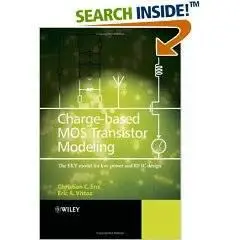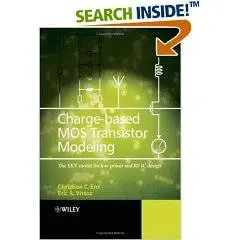Christian C. Enz , Eric A. Vittoz , "Charge-Based MOS Transistor Modeling: The EKV Model for Low-Power and RF IC Design"
Wiley (September 11, 2006) | ISBN:047085541X | 328 pages | PDF | 2,9 Mb
Wiley (September 11, 2006) | ISBN:047085541X | 328 pages | PDF | 2,9 Mb
Modern, large-scale analog integrated circuits (ICs) are essentially composed of metal-oxide semiconductor (MOS) transistors and their interconnections. As technology scales down to deep sub-micron dimensions and supply voltage decreases to reduce power consumption, these complex analog circuits are even more dependent on the exact behavior of each transistor. High-performance analog circuit design requires a very detailed model of the transistor, describing accurately its static and dynamic behaviors, its noise and matching limitations and its temperature variations. The charge-based EKV (Enz-Krummenacher-Vittoz) MOS transistor model for IC design has been developed to provide a clear understanding of the device properties, without the use of complicated equations. All the static, dynamic, noise, non-quasi-static models are completely described in terms of the inversion charge at the source and at the drain taking advantage of the symmetry of the device. Thanks to its hierarchical structure, the model offers several coherent description levels, from basic hand calculation equations to complete computer simulation model. It is also compact, with a minimum number of process-dependant device parameters.
Written by its developers, this book provides a comprehensive treatment of the EKV charge-based model of the MOS transistor for the design and simulation of low-power analog and RF ICs. Clearly split into three parts, the authors systematically examine:
the basic long-channel intrinsic charge-based model, including all the fundamental aspects of the EKV MOST model such as the basic large-signal static model, the noise model, and a discussion of temperature effects and matching properties;
the extended charge-based model, presenting important information for understanding the operation of deep-submicron devices;
the high-frequency model, setting out a complete MOS transistor model required for designing RF CMOS integrated circuits.
Practising engineers and circuit designers in the semiconductor device and electronics systems industry will find this book a valuable guide to the modelling of MOS transistors for integrated circuits. It is also a useful reference for advanced students in electrical and computer engineering.



